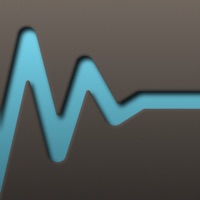
Publicado por Mani Consulting Limited Company
1. To hear how a noise gate performs in this respect, set its release very fast, pluck a low guitar string (or hit a bass note on the piano) and let ring out, listening as the note decays down to the threshold level and the gate starts to activate.
2. The abrupt change in volume from that process sounds unnatural and makes it obvious that you are using a noise gate plugin on the signal.
3. The simplest noise gate plugins simply set the volume to zero when the input level drops below a threshold.
4. Instead of using a gate that fluctuates between two states (open, closed), this plugin uses downward expansion to gently and smoothly reduce the gain as the input drops below the threshold setting.
5. This noise gate plugin has a unique smoothing filter to ensure that the gate makes as little noise as possible when opening and closing, while still being able to open and close very quickly.
6. If your noise gate allows a fast enough release time, you'll hear a buzzing noise as the gate rapidly flip-flops open and closed for a few moments before settling in the closed position.
7. The key challenge that all noise gate designs struggle to overcome is how to make sure the gate doesn't flutter open and closed several times at the end of a sound.
8. Of course, slowing the gate down or delaying its closing is not desirable because we need it to close as quickly as possible when the input signal ends and open immediately when it starts up again.
9. Each noise gate plugin handles this problem in a different way, and therefore each one has its own unique sound.
10. How to keep the gate from opening and closing in time with the oscillation of the sound waves? There are many ways to do it, but the basic idea is to slow the gate down somehow, so it can't open and shut too quickly.
11. So why do you buy another noise gate? There are 2 main reasons: clearer sound and more natural gate-closing sound.
Verifique aplicativos ou alternativas para PC compatíveis
| App | Baixar | Classificação | Desenvolvedor |
|---|---|---|---|
 Noise Gate & Downward Expander Noise Gate & Downward Expander
|
Obter aplicativo ou alternativas ↲ | 7 4.86
|
Mani Consulting Limited Company |
Ou siga o guia abaixo para usar no PC :
Escolha a versão do seu PC:
Requisitos de instalação de software:
Disponível para download direto. Baixe abaixo:
Agora, abra o aplicativo Emulator que você instalou e procure por sua barra de pesquisa. Depois de encontrá-lo, digite Noise Gate & Downward Expander na barra de pesquisa e pressione Pesquisar. Clique em Noise Gate & Downward Expanderícone da aplicação. Uma janela de Noise Gate & Downward Expander na Play Store ou a loja de aplicativos será aberta e exibirá a Loja em seu aplicativo de emulador. Agora, pressione o botão Instalar e, como em um dispositivo iPhone ou Android, seu aplicativo começará a ser baixado. Agora estamos todos prontos.
Você verá um ícone chamado "Todos os aplicativos".
Clique nele e ele te levará para uma página contendo todos os seus aplicativos instalados.
Você deveria ver o ícone. Clique nele e comece a usar o aplicativo.
Obtenha um APK compatível para PC
| Baixar | Desenvolvedor | Classificação | Versão atual |
|---|---|---|---|
| Baixar APK para PC » | Mani Consulting Limited Company | 4.86 | 1.0.4 |
Baixar Noise Gate & Downward Expander para Mac OS (Apple)
| Baixar | Desenvolvedor | Comentários | Classificação |
|---|---|---|---|
| $4.99 para Mac OS | Mani Consulting Limited Company | 7 | 4.86 |
Spotify - Música e podcasts
Resso Música - Rádio, Podcasts
YouTube Music
eSound Music - Ouvir Música
Deezer: Ouvir Música e Podcast
Shazam
Amazon Music: Ouça podcasts
SoundCloud - Música e Áudio
Sua Música: Ouvir e Baixar
Baixar Musicas: Ouvir MP3
Afinador Cifra Club
Beat Maker Pro - Drum Pad
Palco MP3
Cifra Club
Current - Offline Music Player